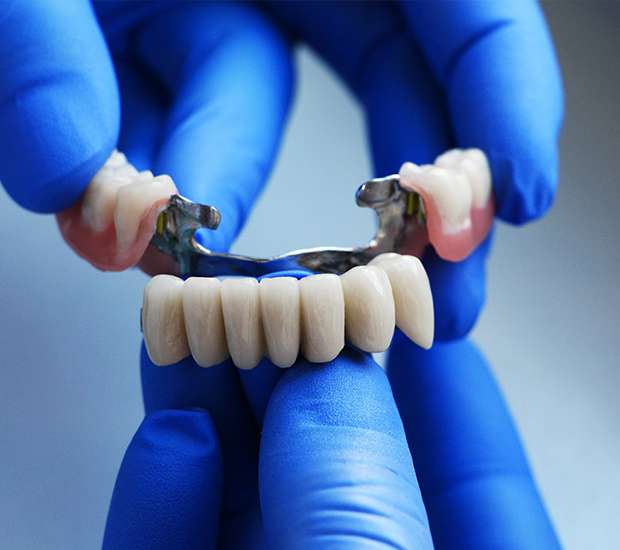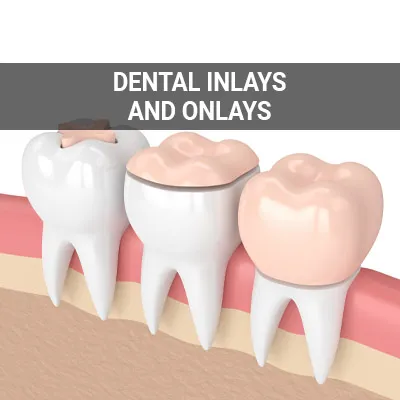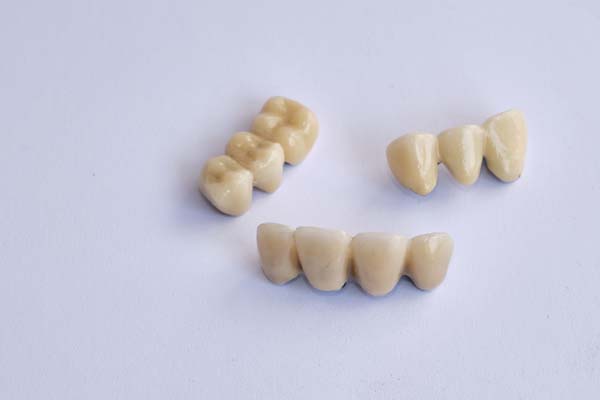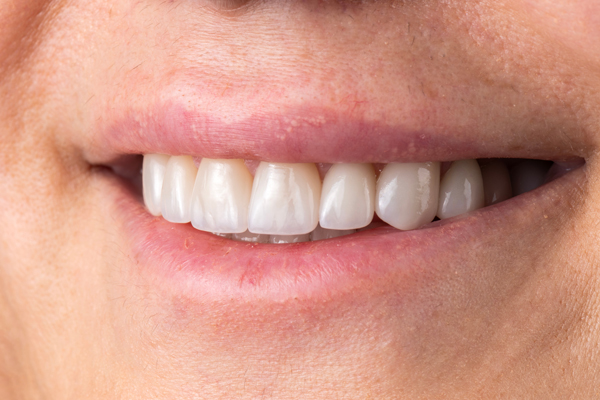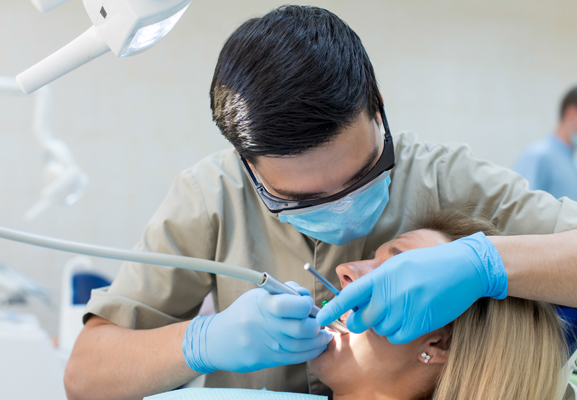Dental Bridges Charlotte, NC
A dental bridge is a tooth replacement option that consists of artificial teeth attached to a frame that can be fit onto a crown over abutting natural teeth or implants. Many patients may consider a dental bridge among other teeth replacement options. The right choice may come down to an option that offers comfort and a natural appearance, which is why many patients choose dental bridges.
At Randolph Dental Care, we offer dental bridges to patients in Charlotte and the surrounding area. After a thorough evaluation and review of medical records, our dentist explains available teeth replacement options and makes recommendations for an optimal treatment plan. We work with top dental labs to create dental bridges that fit well and look good.
Replacing missing teeth is not just a cosmetic matter. It is essential to good overall health to have a full mouth of adequately functioning teeth. Call us at (704) 366-3622 to make an appointment and learn how our dentists can help.
How Dental Bridges Work
A bridge consists of artificial teeth replacements that rest on a frame in the mouth. The frame is then attached to teeth on either side. If there are natural teeth, they will need to receive crowns or implants to support the bridge. We will bond the dental bridge permanently using dental cement. A dentist can remove it and place a new one if the bridge breaks or wears out.
Most commonly, dental bridges replace between one and three adjacent missing teeth. Sometimes, bridges can replace a greater number and even a full mouth. This typically depends on the availability of strong natural teeth or a strong jaw bone that can support several implants. An article by the Mayo Clinic points out that a bone graft can enable patients with bone loss to obtain implants.
After a short adjustment period, patients with bridges are typically able to eat and speak comfortably and naturally. Our dentists help select replacement teeth that blend in with the color and shape of the remaining natural teeth. This is important, not just for appearance but also to ensure a proper bite and spacing.
“After a short adjustment period, patients with bridges are typically able to eat and speak comfortably and naturally.”
Candidates for Dental Bridges
To receive a dental bridge, the patient needs to have some remaining natural teeth. In general, dental bridges are appropriate for cases of one or a few missing teeth. If the patient is missing a large portion of the arch, another treatment may be preferable.During a consultation, we can go over possible options and see which one will be most effective for the patient.
Since it can take up to six months for the gum to heal completely, an individual may experience a delay in receiving a dental bridge. Additionally, a bridge may not be an option if there are insufficient bone and tooth matter to support it. Randolph Dental Care can evaluate whether a patient is a candidate for this treatment. In some cases, a dental bridge may only be part of a treatment plan or smile makeover.
“In general, dental bridges are appropriate for cases of one or a few missing teeth.”
Types of Dental Bridges
There are four main types of dental bridges, and choosing the right one for any particular person depends on the individual's oral health and needs. Here is some key information about each type:
- Traditional. This type of bridge attaches to crown-covered teeth or implants on both sides. They usually consist of either ceramic or porcelain attached to metal. Recently, the use of a ceramic called zirconia has become popular due to this material’s durability and natural look.
- Maryland. This bridge, also referred to as a resin-bonded bridge, is supported by a flat meta or porcelain “wing” that is attached to the backs of abutting teeth. It is less sturdy than traditional bridges. For this reason, it usually replaces front teeth, which take less strain.
- Cantilevered. This bridge only has support on one side, which places a lot of strain on the one supporting tooth. Therefore, dentists avoid placing it in high-stress areas such as the back of the mouth.
- Implant-supported. This type of bridge is true to its name. The bridge is supported by implants that are already present in the jaw bone. They are considered to be the strongest, most stable type of bridge.
“There are three main types of dental bridges, and choosing the right one for any particular person depends on the individual’s oral health and needs.”
Check out what others are saying about our dental services on Yelp: Dental Bridges in Charlotte, NC
Bridges v. Dentures
Although bridges and dentures both act as tooth replacements, there are some differences and similarities between the two. One of the main differences between a dental bridge and dentures is that bridges are a fixed appliance, whereas dentures can be either fixed or removable. Another difference is that fixed dentures require dental implants, while fixed bridges can be placed without implants.
Bridges and fixed dentures are similar in that they both look and feel like natural teeth. They both share the benefit of being strong, durable, and long-lasting. In most cases, patients are able to choose between the two. However, certain cases may require one or the other due to the patient's oral status or any dental conditions or complications.
“Bridges and fixed dentures are similar in that they both look and feel like natural teeth.”
Questions Answered on This Page
Q. Am I a good candidate for a dental bridge?
Q. How can someone benefit from a dental bridge?
Q. What types of dental bridges are available?
Q. What is the difference between a dental bridge and dentures?
Q. What does getting a dental bridge entail?
People Also Ask
Q. What is involved in getting a fixed bridge?
Q. What is restorative dentistry?
Q. How can a root canal help save my cracked tooth?
Q. Who are the right candidates for teeth replacement?
Q. Can dental bridges replace my missing teeth and restore my smile?
Q. What is entailed in the process before getting a dental crown?
The Process of Getting a Dental Bridges
Receiving a bridge typically takes several appointments. If there are not already crowns on the abutting teeth, the dentist must shape them to prepare for crown placement. The dentist will also check the health of the gums and the abutting teeth. Any problems in these areas, such as decay or gum disease, will need to be addressed before placing the bridge. If implants are required to support the bridge, the process of placing them will need to happen first.
Our dentist will take impressions of the mouth and place a temporary bridge while a dental lab is preparing the permanent one. Several appointments may be necessary to finetune the fit of the bridge. We may attach it with temporary dental cement and avoid placing it permanently until we achieve the right fit.
“Our dentist will take impressions of the mouth and place a temporary bridge while a dental lab is preparing the permanent one.”
Frequently Asked Questions
Q. How is a dental bridge different from dentures?
A. Dentures require removal every day, while a bridge stays in the mouth permanently for the duration of its lifespan. On the one hand, bridges tend to offer a better fit and a more natural feeling. On the other hand, fitting the dentures does not require additional procedures such as a crown or implant placement.
Q. How long can I expect my dental bridge to last?
A. Dental bridges usually last between 10 and 15 years. Taking good care of the bridge and seeing a dentist on a regular basis can extend this period further.
Q. Is it normal to have tooth sensitivity after getting a dental bridge?
A. Tooth sensitivity is common after bridge placement. It usually goes away after a few weeks. In the meantime, it can help to avoid very hot or cold foods. The American Dental Association also recommends limiting acids, which can be in some types of mouthwash. Ask a dentist about alternative products.
Q. When do I need to see a dentist about problems with my dental bridge?
A. Some discomfort immediately after placement is usually normal; however, contact a dentist if pain or sensitivity persists or worsens. Damage to the bridge or crowns also needs prompt, professional attention.
Q. Why does my dental bridge keep coming loose?
A. If a dental bridge keeps loosening or falling out, the most common reason is decay in the supporting teeth. Other causes could include gum disease. Whatever the reason, a loose bridge is an important reason to call our office right away.
Dental Terminology
Helpful Related Links
- American Dental Association (ADA). Glossary of Dental Clinical Terms. 2024
- American Academy of Cosmetic Dentistry® (AACD). Home Page. 2024
- WebMD. WebMD’s Oral Care Guide. 2024
About our business and website security
- Randolph Dental Care was established in 2016.
- We accept the following payment methods: American Express, Cash, Check, Discover, MasterCard, and Visa
- We serve patients from the following counties: Mecklenburg County
- We serve patients from the following cities: Charlotte, Matthews, Huntersville, Fort Mill, and Pineville Mint Hill
- Norton Safe Web. View Details
- Trend Micro Site Safety Center. View Details
Back to top of Dental Bridges
